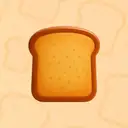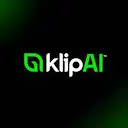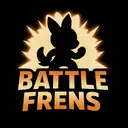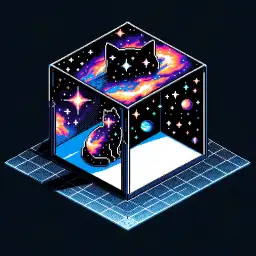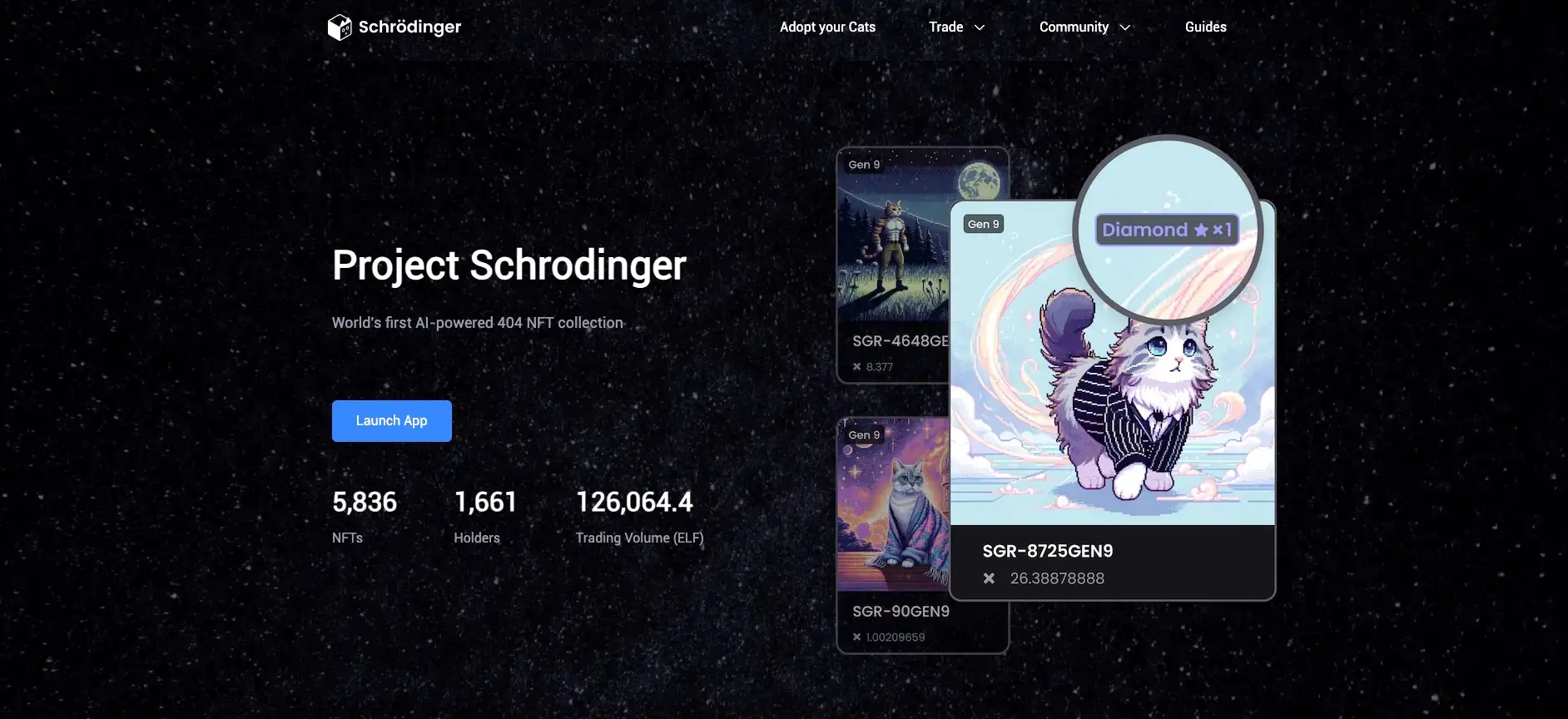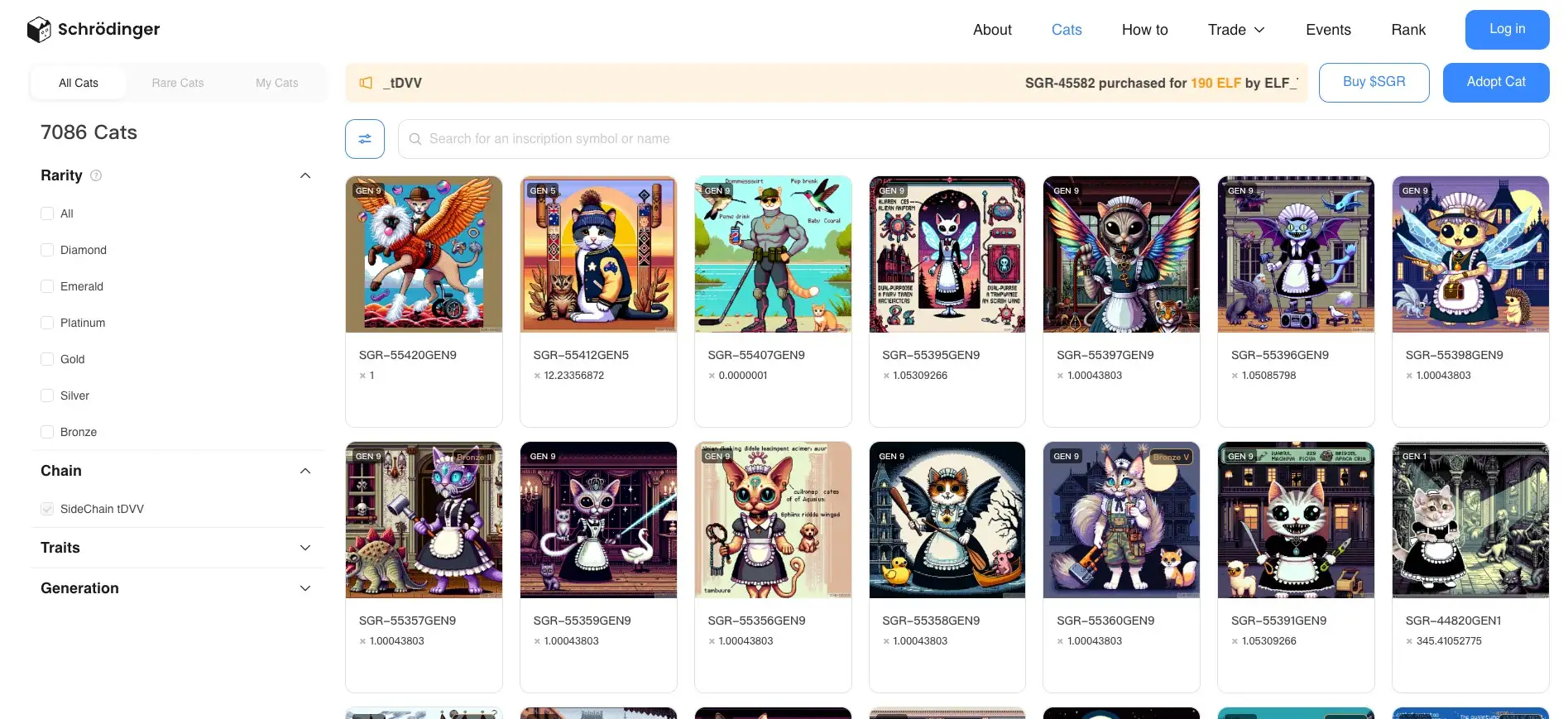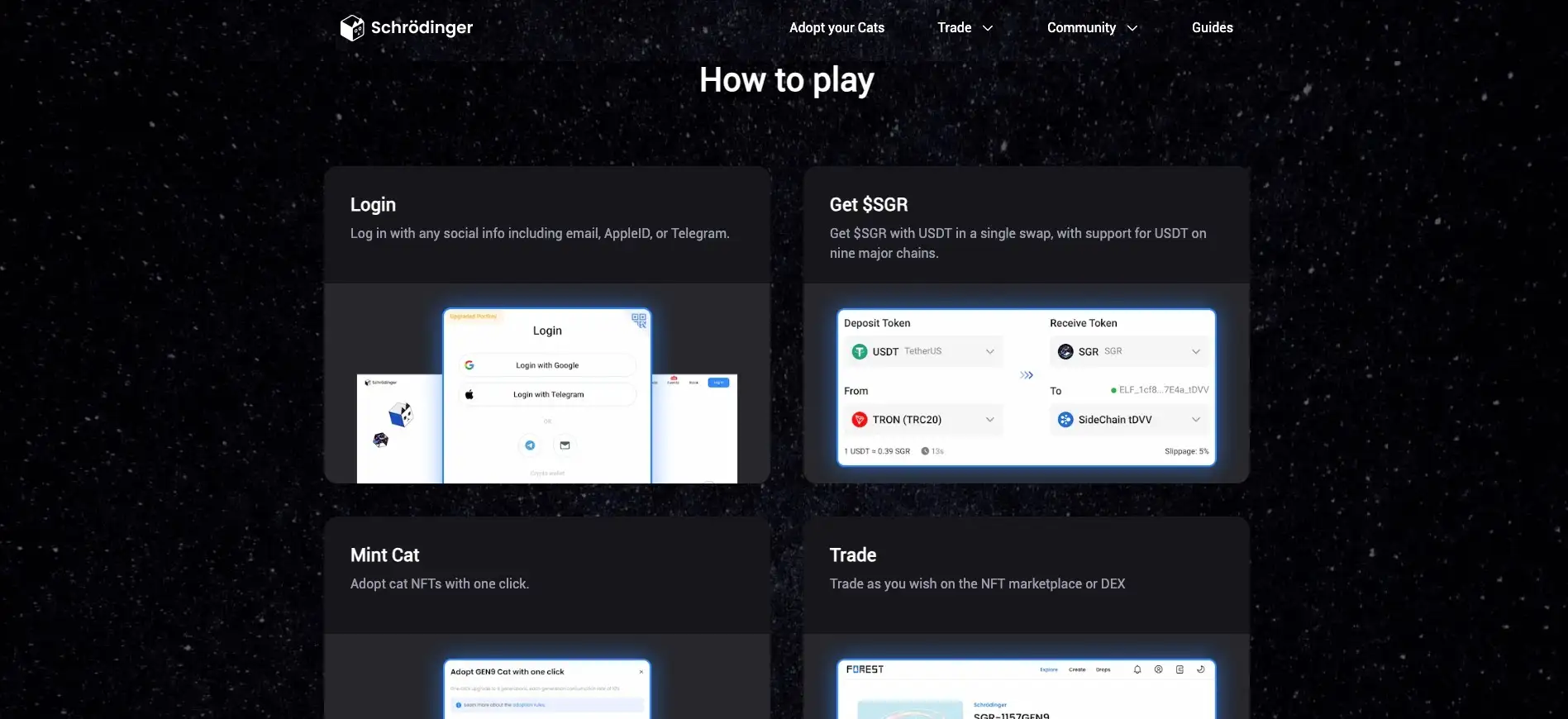About Project Schrodinger
The Schrödinger's Cat project is a pioneering initiative at the intersection of artificial intelligence and blockchain technology. At its core, the project seeks to revolutionize the way NFTs are perceived and interacted with by introducing dynamic, evolving digital assets. Unlike traditional NFTs, which are static, Schrödinger's Cat NFTs are designed to change over time, influenced by a variety of factors including user interactions and environmental conditions.
The project's mission is to create a vibrant ecosystem where users can engage with NFTs on a deeper level, transforming the concept of digital ownership. By integrating AI with NFTs, Schrödinger's Cat aims to push the boundaries of what is possible within the realm of digital art and collectibles. This innovative approach not only enhances the value of NFTs but also introduces new possibilities for their use in areas such as gaming, virtual worlds, and digital art.
The Schrödinger's Cat project is a cutting-edge initiative that fuses artificial intelligence with blockchain technology to revolutionize the world of NFTs. At its core, the project seeks to create a dynamic ecosystem where NFTs are not static but evolve over time, influenced by user interactions, environmental conditions, and even elements of randomness. This approach transforms the concept of digital ownership, offering a new level of engagement and personalization for users.
The project was conceived with the vision of pushing the boundaries of what is possible within the NFT space. Traditionally, NFTs have been seen as digital assets that represent ownership of a specific item, whether it's a piece of art, music, or virtual real estate. However, Schrödinger's Cat takes this concept further by integrating AI technology to create NFTs that can grow, change, and develop new attributes over time. This evolution is powered by the SGR token, which is integral to the process of NFT evolution within the ecosystem.
Since its inception, the Schrödinger's Cat project has achieved several key milestones. The launch of the first generation of AI-driven NFTs marked a significant step in the project's development, offering users a glimpse into the future of digital collectibles. The introduction of the SGR token provided the necessary fuel for the ecosystem, enabling users to trade, evolve, and interact with their NFTs in meaningful ways. Additionally, the project’s commitment to cross-chain compatibility ensures that users can interact with the ecosystem across multiple blockchain networks, enhancing accessibility and liquidity.
Schrödinger's Cat competes with other NFT platforms like Axie Infinity and Decentraland, but it differentiates itself through its innovative use of AI to drive the evolution of NFTs. This unique feature offers an unparalleled experience in the NFT market, setting Schrödinger's Cat apart as a leader in the next generation of digital assets.
- Dynamic NFTs: Schrödinger's Cat introduces NFTs that evolve over time, providing users with a unique and interactive digital asset experience.
- AI Integration: The project leverages artificial intelligence to enable the dynamic evolution of NFTs, offering a level of customization and unpredictability not found in traditional NFTs.
- Multi-Chain Compatibility: The SGR token and NFTs can be bridged across multiple blockchains, enhancing liquidity and accessibility.
- Community Governance: SGR token holders can participate in governance decisions, influencing the future development of the ecosystem.
- Staking Rewards: Users can stake their SGR tokens to earn rewards, incentivizing long-term holding and potentially increasing the token's value through scarcity.
- Cross-Industry Use Cases: The dynamic NFTs have applications across various industries, including gaming, digital art, and virtual worlds, expanding their utility beyond traditional NFTs.
Getting started with the Schrödinger's Cat project is straightforward:
- Create an Account: Visit the Schrödinger's Cat website and sign up for an account. You'll need a valid email address and a secure password.
- Set Up a Wallet: To interact with the Schrödinger's Cat ecosystem, you'll need a compatible cryptocurrency wallet. Popular options include MetaMask and Trust Wallet.
- Acquire SGR Tokens: Purchase SGR tokens on supported decentralized exchanges. These tokens are necessary for interacting with the platform, including evolving NFTs and participating in governance.
- Explore the NFT Marketplace: Once you have SGR tokens, you can start exploring the NFT marketplace. Browse, purchase, and trade AI-driven NFTs within the ecosystem.
- Participate in NFT Evolution: Use your SGR tokens to initiate the evolution of your NFTs, unlocking new features and attributes as they grow.
- Join the Community: Engage with the community by participating in governance votes and discussions. Your input can help shape the future of the Schrödinger's Cat project.
- Stay Informed: Follow updates and announcements on the official documentation and community channels to stay informed about new features, developments, and opportunities within the ecosystem.
Project Schrodinger Token
Project Schrodinger Reviews by Real Users
Project Schrodinger FAQ
In the Schrödinger's Cat ecosystem, AI-generated NFTs evolve based on user interactions, environmental factors, and specific token dynamics. These changes could involve altering visual elements, adding new attributes, or even generating completely new forms, making each NFT unique and unpredictable.
While the evolution of NFTs in the Schrödinger's Cat project is driven by AI, users have some control over the process by choosing specific interactions and using the SGR token strategically. However, part of the appeal is the element of unpredictability, as the AI introduces random factors into the evolution.
Unlike traditional NFTs, which are static, Schrödinger's Cat NFTs are dynamic and evolve over time. This unique feature, powered by AI technology, makes each NFT a living, changing digital asset that offers continuous engagement for its owners.
The SGR token is essential for initiating and managing the evolution of NFTs within the Schrödinger's Cat ecosystem. Users spend SGR to activate changes in their NFTs, unlocking new features, visual updates, or entirely new forms.
Yes, the SGR token can be staked to earn rewards. Staking not only provides users with additional SGR but also contributes to the scarcity and potential value appreciation of the token over time.
You Might Also Like


